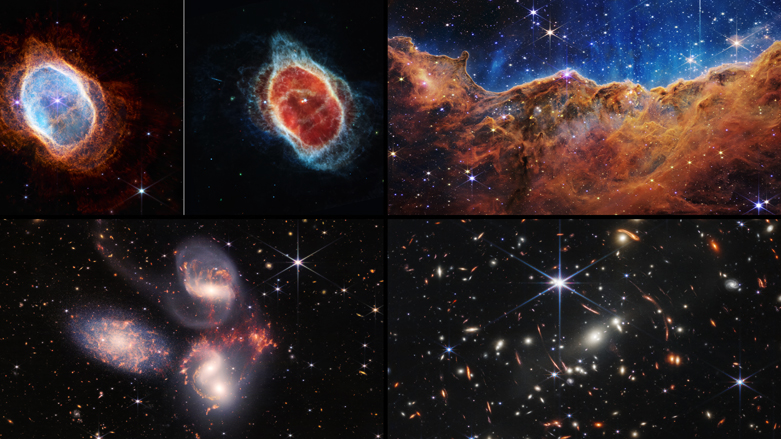PHOTOS: James Webb probes the depths of the universe with colorful and dazzling scenes

ERBIL (Kurdistan 24) – The US space agency (NASA) continues to unveil one image after another of the depths of the universe with colorful and dazzling scenes captured by the James Webb Telescope.
Among the scenes is a high-resolution, full-color image of a cluster of galaxies that offers the most detailed glimpse ever of the early universe.

And the White House showed the first snapshot taken by James Webb, ahead of the biggest reveal of images that would mark the beginning of a long-awaited new era in astronomy.

The image showed a series of 4.6-billion-year-old galaxies called SMEX 0723, whose combined mass acts as a "gravitational lens", distorting space to greatly amplify the light coming from distant galaxies behind, according to space experts.
NASA also showed a surprising image showing cosmic cliffs and a brilliant sea of stars, where ultraviolet rays and stellar winds form enormous walls of dust and gas.

The $9 billion Webb Observatory, the largest and most powerful space science telescope ever built, is designed to probe the first phase of the known universe, heralding a revolutionary age of astronomical discovery.
One of the oldest faint light scenes that appear in the "background" of the image dates back more than 13 billion years, making it only about 800 million years younger than the Big Bang, the theoretical spark that started the expansion of the known universe about 13.8 billion years ago.
The footage also showed two nebulae, which are two groups of celestial bodies, showing the life cycle of stars, a planet outside the solar system, and a compact group of galaxies.

"Every picture is a new discovery," said Bill Nelson, the head of the US Space Agency, adding that every shot "will give humanity a view of the universe like we've never seen it before."
One of the main missions of James Webb Telescope is to explore the early ages of the universe.
The telescope is powered by enough fuel to last 20 years. 20,000 people from around the world worked on this project, which made it the fruit of tremendous international cooperation.

Publishing the full set of images will enable experts to begin interpreting the data collected using custom software, giving the go-ahead for a great science adventure.


